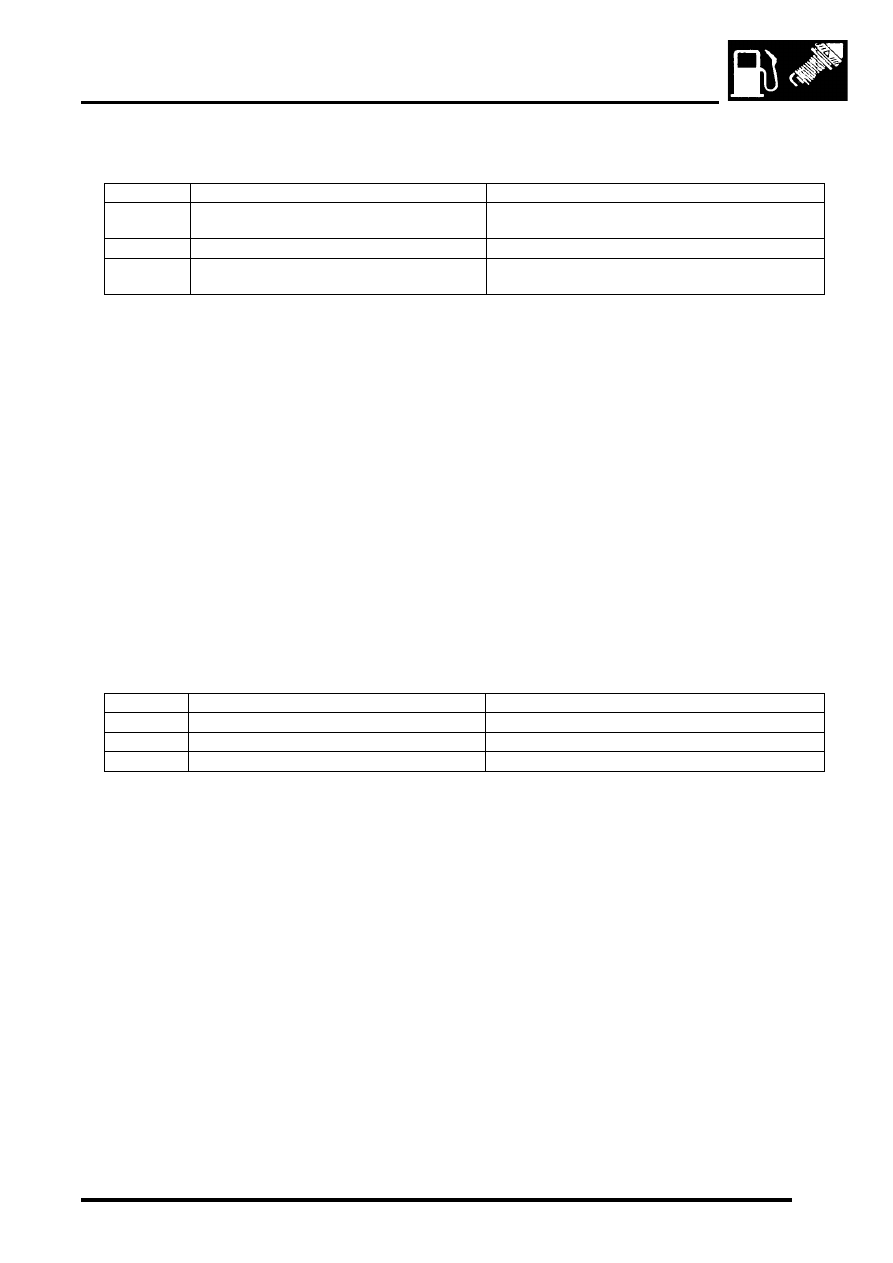Discovery 2. Manual - part 493

ENGINE MANAGEMENT SYSTEM - V8
DESCRIPTION AND OPERATION 18-2-51
Should a malfunction of the rough road signal occur, the following fault codes may be evident and can be retrieved
by TestBook:
Hill Descent Control (HDC) signal
The ECM transmits throttle angle, engine torque, engine identification (Td5 or V8), and transmission type (automatic
or manual) data to the SLABS ECU to support the Hill Descent Control system. The information is transmitted via a
0 – 12V pulse width modulated (PWM) signal at a frequency of 179.27 Hz.
Function
The HDC signal output from the ECM is via pin 29 of connector C0636. The ECM generates a PWM signal that varies
in pulse width in accordance with changing throttle angle or engine torque. The throttle angle data is transmitted on
pulses 1, 3, 5 and 37. The engine torque data is transmitted on pulses 2,4,6 and 38. The engine and transmission
information is transmitted on pulse 39. A synchronising pulse is transmitted after every 39th pulse.
The HDC signal can fail in the following ways:
l
Harness or connector damage
A HDC signal failure may be evident from the following:
l
HDC / ABS warning light on
l
HDC inoperative
l
Audible warning
Should a malfunction of the HDC signal occur, the following fault codes may be evident and can be retrieved by
TestBook:
Low fuel level signal
When the fuel level in the fuel tank becomes low enough to illuminate the low fuel level warning lamp in the instrument
cluster, the instrument cluster generates a low fuel level signal. If the low fuel level signal is present during the ECM
misfire detection function the ECM can use it to check for a 'false misfire'.
Conditions
The fuel sender generates the low fuel level signal when the fuel sender resistance is greater than 158
±
8 ohms.
P Code
J2012 Description
Land Rover Description
P1590
ABS rough road signal circuit malfunction
Hardware is OK, but SLABS ECU is sending an error
signal
P1591
ABS rough road signal circuit low
Signal from SLABS ECU short circuit to earth
P1592
ABS rough road signal circuit high
Signal from SLABS ECU short circuit to vehicle battery
supply
P Code
J2012 Description
Land Rover Description
P1663
Throttle angle/Torque signal circuit malfunction
SLABS HDC link open circuit
P1664
Throttle angle/Torque signal circuit low
SLABS HDC link short circuit to ground
P1665
Throttle angle/Torque signal circuit high
SLABS HDC link short circuit to battery voltage